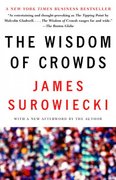Thank you for your help
29. The following is from an article in the "Overheard" section in the Wall Street Journal: "Hi, I'm a Mac." "And I'm a PC." "I like to stay in those posh hotels with free coffee and 700-threadcount sheets." "I like to stay at Motel 6." That is the latest revelation about the great computing divide, courtesy of Orbitz Worldwide CEO Barney Harford. Touting his company's ability to differentiate itself by slicing and dicing customer data; he let on that those booking hotel rooms using Apple computers pay on average $20 more a night. The explanation could be simple: Anyone who pays a 50% or so premium for a MAC has more money to begin with. Either that or they are the ideal consumer - the type who pays through the nose for a brand. a. All else equal, the data could suggest the demand for Mac computers has higher income elasticity than the demand for PCs. b. When the author writes MAC buyers will "pay through the nose for a brand", he/she assumes the computers are close or perfect substitutes. c. If consumers will "pay through the nose for a brand", the demand curve for branded products should be relatively inelastic compared to non-branded products. d. All of the above answers are correct. e. Only answers a. and b. are correct.Questions 30 through 33 are related. 30. In a Wall Street Journal article titled "A Race to Satisfy the World's Hunger for Chocolate" [which is attached], the author writes: "Due to rising demand in emerging markets, food companies and commodity traders are forecasting that global consumption of cocoa will surge by 25%, to about five million metric tons, by 2020. Industry officials and market experts say new and better cocoa plants are vital to future supplies- and to keeping chocolate an affordable luxury." Kona Haque, a commodities strategist at Macquarie Bank, agrees cocoa prices are likely to rise, but she says some forecasts calling for the doubling of prices over the long term are extreme 'Demand will grow steadily, but, with the right price, so can supply,' she said. 'I'd expect cocoa prices to rise 50% in 10 years'." Assume a typical upward sloping supply curve and downward sloping demand curve. If the commentary and forecasts such as "demand will grow steadily, but , with the right price, so can supply" and "industry officials and market experts say new and better cocoa plants are vital to future supplies" are correct then: a. the demand curve is forecast to shift up/out or to the right while the supply curve shifts up/back or to the left. b. the demand curve is forecast to shift up/out or to the right while the supply curve shifts down/out or to the right. C. the demand curve is forecast to shift down/back or to the left while the supply curve shifts up/back or to the left. d. the demand curve is forecast to shift down/back or to the left while the supply curve shifts down/out or to the right. e. the demand curve will not shift while the supply curve shifts down/out or to the right. 31. The price of cocoa on March 29, 2012 when the article was written was $2,223 per ton. With the information given in question 28, and assuming the forecasts for both quantities [an increase of 25%] and prices [an increase of 50%] are for 2020 [8 years in the future, to be consistent, rather than "in 10 years"], the current and forecasted quantities and prices are: Current Price Forecast Price Current Quantity Forecast Quantity $2,223 $3,334.50 4.85 million tons 5 million tons b. $2,223 $2,361.94 4.85 million tons 5 million tons C. $2,223 $2,848.22 4 million tons 5 million tons $2,223 $3,334.50 4 million tons 5 million tons $2,223 $2,361.94 4 million tons 5 million tons3!. Assume the prices and quantities in lI'lllmestion 35 are forecast to he the result of a change in demand only. It is not an accurate assumption because of the long time span but suppose for now it is. That means a single factor linear supply cunre can be estimated. The supply curve estimated from the ohsenrecl and forecast prices and quanties is: a. as = 4-55 million + .Ol P Is. as = 235 million + .0011 P c. as = 114445 million + .m1& P cl. as = 2 million -I- 9m P e. as = 12 million + 119? F 33. The demand for cocoa is most liltely forecast to grow by 2596 over the next 10 years because: a. the analysts forecasting the growth in demand expect the price of cocoa to increase. h. the analysts forecasting the growth in demand expect the price of ooooa to decrease. c. the analysts forecasting the growth in demand expect per capita incomes to increase. cl. the analysts forecasting the growth in demand expect the population to age. e. Answers I: and care correcL









